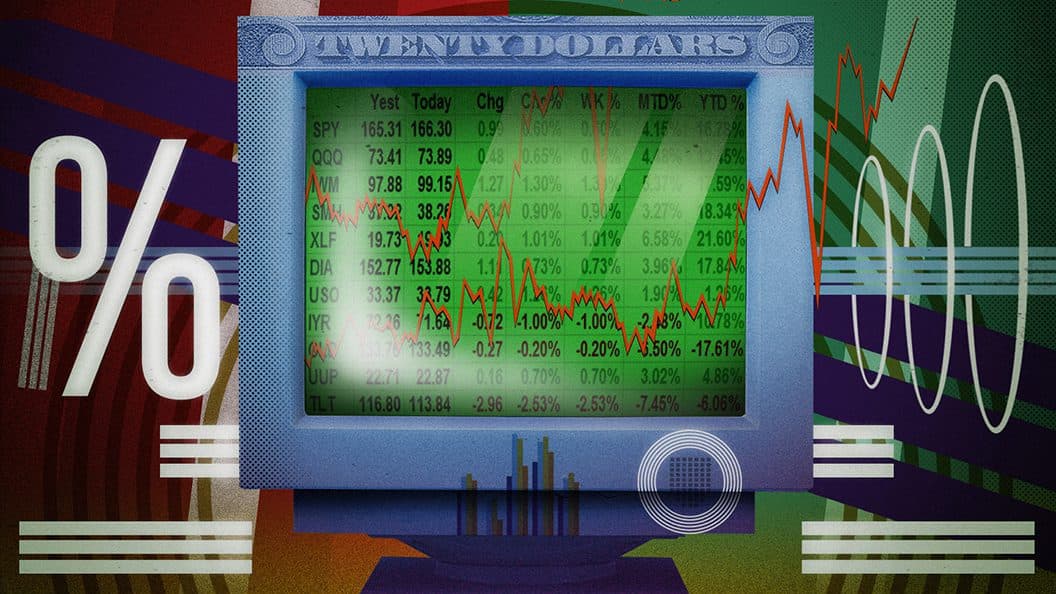Crash or Rally: What to Expect in 2H 2021
Investors should keep an eye on corporate earnings growth in the coming months, according to Nicholas Colas, co-founder of DataTrek Research.

Blockworks exclusive art by axel rangel
- The S&P 500 index opened at record high Thursday and data showed fewer-than-expected weekly jobless claims on the first day of the second half of the year
- Fundstrat Global Advisors managing partner and head of research Tom Lee increased his end-of-year price target and sees the S&P 500 rallying 7%
Investors are waiting anxiously to see if there is more steam left in the rally for the second half of the year.
The S&P 500 index opened at record high Thursday and data showed fewer-than-expected weekly jobless claims. Energy stocks rose with oil and airline and cruise line stocks rose higher as reopening efforts continued.
After 2020’s 3.5% decline, the US economy is expected to grow 6.5% in 2021, according to FactSet.
Fundstrat Global Advisors managing partner and head of research Tom Lee increased his end-of-year price target Wednesday. He sees the S&P 500 rallying 7% by 2022, putting its 2021 gains at 22%.
Lee pointed to other examples of years with a high-performing first half. When gains occur in the first six months, they tend to follow in the next two quarters, he said. With interest rates stable, a cooperative Federal Reserve and continued reopening efforts, the market is poised to go higher.
2H threats
There are, however, several threats that could derail the rally in the coming months. Nicholas Colas, co-founder of DataTrek Research, pointed to a spike in oil prices, Fed policy mistakes and peak corporate earnings growth as the main areas to watch when anticipating market dislocation.
A sustainable 50% to 100% annual increase in oil prices historically precedes a stock market decline, Colas said.
“Oil prices fundamentally drive inflation and big spikes in oil prices always cause recessions,” he wrote in a note on Thursday. “Modestly higher crude prices are helpful to the Fed’s goal of convincing consumers and investors that it is serious about seeing sustainable, cross-cycle 2 percent inflation.”
Rapidly rising oil prices will cause inflation to overshoot the Fed’s preferred 2%, Colas said, and also stress American consumers.
“This would be the proverbial ‘rock and hard place’ spot for the Fed,” Colas said.
Colas pointed to former Fed Chairman Ben Bernanke, who’s May 2013 comments about tapering weakened the bull market. All eyes are on the Fed, and any mis-messaging can have swift and significant impacts on the market.
“While we’re at little risk of overtightening just now, the policy miscommunication issue is very much on the table,” Colas said. “Chair Powell has, thus far, managed the messaging around bond purchase tapering quite well… But there’s no historical playbook for a successful tapering discussion – just a list of ‘don’ts’.”
Corporate earning watch
Investors also need to keep an eye on corporate earnings growth in the coming months, Colas said. S&P 500 historical earnings show that earnings rise quickly following a recession, then stabilize and grow at a slower rate before crashing in the next economic downturn.
“We’ve seen the first phase, and the S&P’s string of recent new highs says we’re still in it,” Colas said. “But, at some point we hit phase two and markets then wrestle with what the “right” valuation is for that new environment. While these awkward mid-cycle periods are rarely bull market killers, they can make for very low returns… and valuations are high enough currently that peaking earnings could be a larger risk than before.”
Investors and analysts are eagerly awaiting Friday’s June jobs report, which will help guide predictions about what to expect from the Fed at the next meeting. Experts agree that at this point, the biggest threat to economic recovery remains the virus and the possibility that the Delta variant may lead to additional lockdowns.






